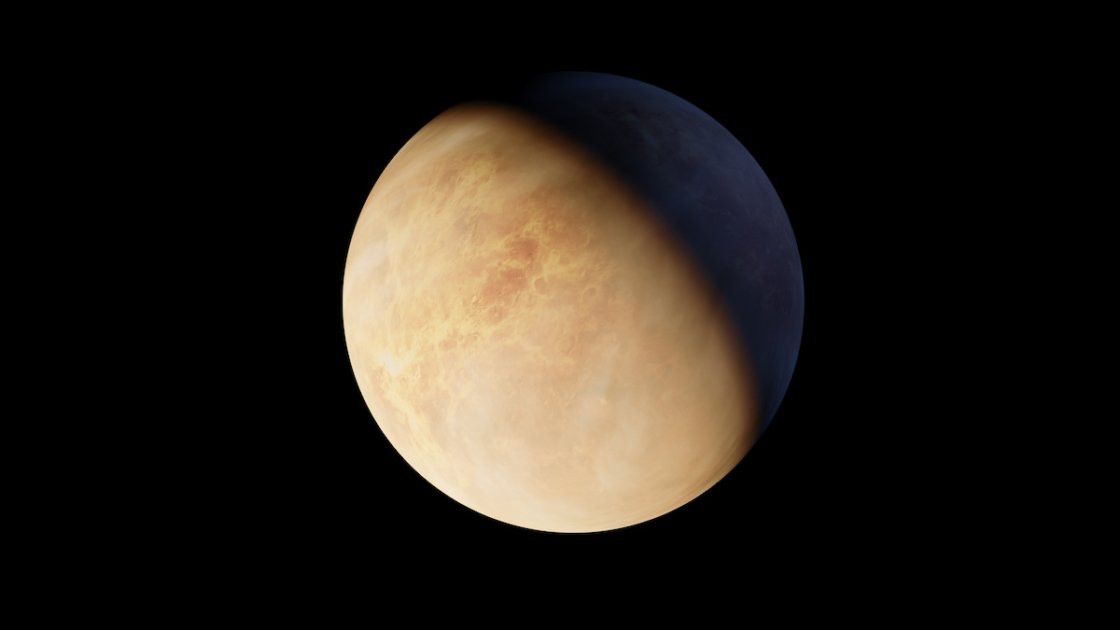And Venus Was Her Name …
Check out these 10 fascinating facts about Earth's nearest neighbor and "sister planet," Venus.

After the Moon, the planet Venus is the brightest natural object in the night sky. It is both the Earth’s closest neighbor in our Solar System and the planet most similar to Earth in size, gravity, and composition. For this reason, Venus is often referred to as our “sister planet” or “twin.”
Here are some more facts you might not know about the “cloud” planet:
- The diameter is 7,519 miles, or about 95% that of the Earth. Its mass is 81.5% of the Earth’s.
- Venus orbits the Sun once every 225 Earth days, and rotates once every 243 Earth days, giving it the longest day of any planet in our Solar System. Its days are actually longer than its years. It rotates on its axis in the opposite direction from most planets, and although all planetary orbits are elliptical (oval-shaped), Venus comes the closest to having a perfectly circular orbit.
- The planet is named after Venus, the Roman goddess of beauty and love. Its two upraised continental masses are named for the Greek and Babylonian goddesses of love, Aphrodite and Ishtar.
- The planet’s surface can’t be seen from space, because it is covered with a thick layer of clouds and sulfuric acid. Venus has the densest atmosphere of the four terrestrial planets (Mercury, Venus, Earth, and Mars), which consists mostly of carbon dioxide. The atmospheric pressure at the planet’s surface is 92 times that of the Earth. This is equivalent to the pressure of the ocean at a depth of about half of a mile.
- Though Venus is nearly twice the distance of Mercury from the Sun, and thus receives only 25% of the solar radiation Mercury does, its surface is actually hotter, reaching temperatures of up to 860 °F. The reason is that Venus’ thick carbon dioxide-based atmosphere and sulfur dioxide clouds produce the strongest greenhouse effect in our Solar System.
- Venus has no moons. Some scientists believe it once had at least one moon, which was reabsorbed into the planet when a large-scale impact reversed the direction of its spin.
- Though the surface of Venus now resembles a desert, the planet may once have had oceans, similar to those on Earth. If this is true, they completely evaporated as the planet’s surface temperature rose.
- Nearly 1,000 impact craters pock the surface of this planet. These are fairly evenly distributed across the planet. While craters on the Earth and our Moon degrade over time, the majority of Venusian craters are in perfect condition. The craters range from about two miles to 175 miles in diameter. Because of the planet’s dense atmosphere, incoming projectiles less than two miles in diameter lack sufficient mass to make a dent.
- Venus is brightest either just before sunrise or just after sunset, which is why it is often celled “the Morning Star” or “the Evening Star.” Every 584 days, it passes the Earth in its orbit around the Sun. When it does so, it shifts from being the Evening Star, most visible after sunset, and becomes the Morning Star, most visible before sunrise.
- Venus is one of the few celestial bodies bright enough to be seen with the naked eye during the day, if you know where to look. It always sits within about 47° of the Sun. Viewed by telescope, it appears to have phases similar to our Moon.
No matter the time of year, Venus is one of the most impressive sights in the night sky. Take some time tonight to view this brilliant celestial body.

Jaime McLeod
Jaime McLeod is a longtime journalist who has written for a wide variety of newspapers, magazines, and websites, including MTV.com. She enjoys the outdoors, growing and eating organic food, and is interested in all aspects of natural wellness.






What does GR. ILLUM. EXT. mean?
Very nice , useful and accurate information . Thanks a lot .
I agree, Venus is truly an awesome site. As a child I remember seeing it thinking it was a star, not knowing it was a planet, and saying, “Star light, Star bright, First star I see tonight, I wish I may, I wish I might, Have this wish, I wish tonight.” I guess it is and always has been the “first star I see tonight”…. Could this be the Star referred to in the Bible that Mary and Joseph folllowed to get to where they needed to go before Christ was born? I have always assumed it was, but I wonder what your thoughts are on the subject. Thank you for your interesting insight. Stefeni